The 1947 French
Cheval-Blanc is widely recognized as one of the most expensive wines, but it is
not the only one. According to a report last month (May 2021) Château
Lafite-Rothschild 1896 at $233,000, Shipwrecked 1907 Heidsieck at $275,000,
1947 Cheval Blanc at $304,375, 1945 Mouton-Rothschild at $310,000, Screaming
Eagle Cabernet Sauvignon 1992 at $500,000,1945 Romanee-Conti
at $558,000. Whereby a bottle of wine aged in space could sell for $1
million.
Christie’s is
selling a bottle of
Pétrus 2000 that
was aged for 14 months aboard the International Space Station (ISS) before
returning to Earth in January. And the British auction house estimates will
ultimately fetch a price “in the region
of $1 million.”
That would make the
space-aged vintage the most expensive bottle of wine ever sold. (The current
record for a single bottle of wine came in 2018, when anonymous buyers paid $558,000 for a bottle of 1945 Romanee-Conti
French Burgandy, sold by Sotheby’s.)
But do such expensive wines really taste all that much
better than cheaper wines?
Let us start with a
look at the wine trade which in 2018 reached €31 billion.
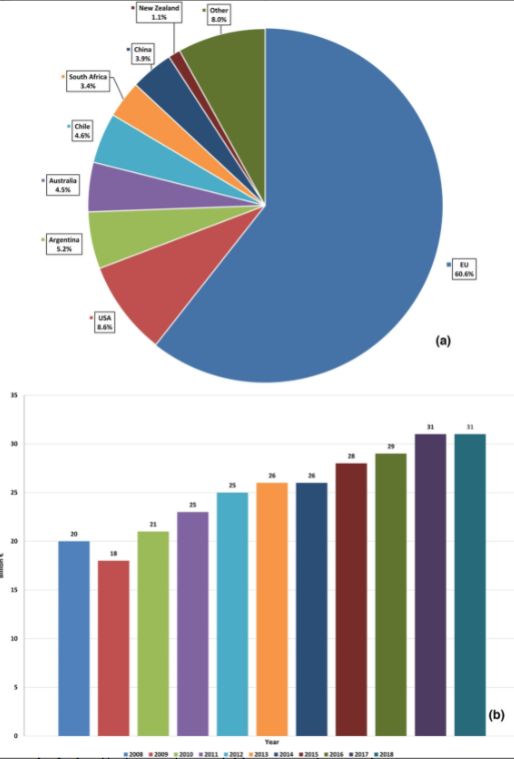
The wine report
Legally, wine is the
alcoholic beverage obtained from the fermentation of the juice of freshly
gathered grapes. It may contain a few other things - some sulphur
to preserve it and sugar added to the must to a'djust
the alcohol content - but these additives are properly policed by the relevant
authorities.
When you are buying a
bottle of wine however, you can be confident that it really is fermented grape
juice and that it really does contain the amount of alcohol stated on the
label. It has been said that the wine commercially produced today (January 2008)
is a far more pure and reliable product than that produced before (discounting
the anti-insecticides that is). In the past, adulteration of wine was the rule;
now it is the exception. With bread, the reverse is true, and as with wine in
the past, we are no longer sure what bread is, never mind whether it has been
falsified.
But how for example
did bread become (generally) so bad and wine (relatively) so good? Part of the
difference lies in the fact that wine is a much less natural product than
bread. Whereas bread is cooked, wine is manufactured; the one is (potentially)
ruined by large-scale modern industry whereas the other is (potentially)
improved by it. Good wine is the result of a complex interaction between man
and the environment, and for a long time man was less than expert at his side
of the bargain, making mistakes which he could only rectify by poisoning his
own product in order to cover them up.
For all their odes to
wine jars and apostrophes to wine-dark seas, the Greeks and Romans made some
badly corrupted wines. Pliny the Elder was complaining about it in the first
century AD. 'So many poisons', he wrote in his Natural History, 'are employed to
force wine to suit our taste - and we are surprised that it is not wholesome!'
Wine-making was an imprecise art, and ancient wine-makers were much less
skilled in monitoring the various stages of manufacture to achieve the taste
they desired than their modern equivalents. If all the elements came together -
a luscious harvest of grapes and accurate fermentation - ancient wine might
well have been delicious. Often, though, wine came out wrong and needed to be
'adjusted' after the event. So, in Africa, said Pliny, rough wines might be
softened with gypsum and, 'in some parts of the country, with lime'. The Greeks
on the other hand, feared blandness in wines rather than roughness and they
enlivened the smoothness of their wines with potter's earth or marble dust or
salt or sea-water, while in some parts of Italy they use resinous pitch for
this purpose and it is the general practice both there and in the neighboring
provinces to season must with resin; in some places they use the lees of older
wine or else vinegar for seasoning.
Some of the additions
for enhancing the wine's flavor were fairly harmless. Commonest was honey,
often added in prodigious quantities - as much as half and half - suggesting
that unsweetened wine must often have been a mouth-puckeringly sour drink. The Gauls apparently were fond of adding herbs, such as thyme
or rosemary. The Greeks added rose petals, violets or mint. Pliny mentions such
strange additions as asparagus, rue, sorb apples, mulberries, Syrian carob pods
(a bit like chocolate), juniper berries, turnips, roots of squills, cassia,
cinnamon, saffron. It is hard to know which of these were adulterations proper
and which were simply culinary innovations. We do not believe we adulterate
wine when we add cinnamon quills, cloves, orange peel and sugar to 'mull' it at
Christmas time (though the quality of the wine can often do with concealing).
On the other hand, some of these ancient flavorings were clearly intended to
deceive. The Roman farming writer Columella recommended various artificial
flavorings but advised wine-sellers not to advertise the fact 'for that scares
the buyer off.
Other ancient wine
additives had a more practical purpose. The great problem with wine was that it
went off so quickly. Most Roman wine was essentially alcoholic fruit juice.
There were exceptions to this - the poet Juvenal writes of vintage wine laid down
in its bottle for centuries, since the time when Consuls had long hair - but
these more mature wines were just this: exceptions.
Beaujolais Nouveau is
well aged by comparison with most ancient Roman wines. We can get some idea of
how quickly ancient wine deteriorated from the fact that the jurist Ulpian,
writing in the third century AD, described 'old wine' as wine made the previous
year. Anything which could make the wine keep longer in the Mediterranean
climate was seized upon, with too little thought for the effect it might have
on the wine's wholesomeness. This was the main reason that so many wines,
Greek wines especially, were resinated - the ancient
counterparts of modern retsina. The earthenware amphorae in which wines were
kept were often porous, letting air in and oxidizing the wine. Wine-makers
found that the wine kept better if the inside of the jar was coated with resin;
and better still if a little resin was added to the wine " itself along
with the must, either in powdered form or as a sticky liquid. Eventually,
drinkers became connoisseurs of different kinds of resins - the resin of
Syrians said to resemble Attic honey - but resin's primary purpose was
preservation; drinking a glass of inferior retsina can still feel a little like
being pickled in Cuprinol.
Preservation was also
the point of adding seawater - salt is a preservative - though it must have
made for a repulsive drink. Pliny complained that wines made with seawater were
'particularly injurious to the stomach, nerves and bladder'. Nothing like as
injurious, however, as a still more popular preservative, namely lead, which
Pliny saw as harmless; and he was not alone in this belief. The Romans thought
that lead was wonderful for wine. Lead ions inhibit the growth of living
organisms, so lead delayed the point at which wine turned into vinegar and
generally made it less apt to spoil. What is less well known - because we do
everything we can not to consume it now - is that lead is delicious. Those
Victorian children gnawing on their lead pencils and chewing on their lead
soldiers were not just playing out some Freudian oral fixation, they were also
satisfying a craving for sweetness. The Romans swore by lead to correct a sour
wine, making it sweeter. This was especially the case if the lead was added in
the form of sapa or difrutum,
a concentrated grape juice or must boiled down in a lead vessel.
Writing as a
landowner in the first century AD, Columella noted that 'Some allow a quarter
of the must to boil away after pouring it into leaden pots, some a third' but
that 'if one lets half of it boil away, it becomes undeniably a better sapa' - and one with a higher lead content. The farming
writer Cato recommended using a fortieth part of this deadly reduction during
wine-making. He would surely never have done so, had he realized that lead was
a poison, capable of causing headache, fatigue and fever; sterility; loss of
appetite; severe constipation and unbearable colic pains; loss of speech,
deafness, blindness, paralysis, loss of control of the extremities- and
eventually death. Leaded wine must have had terrible effects on the Romans one
historian has suggested that endemic lead disease may have been one reason why
so many wealthy Romans were sterile - yet they continued to drink it in the
belief that it was good for their health.
What made lead a
poison was that its effects are cumulative. Most of the body's absorbed lead is
stored in the skeleton where it builds up over many years. Unlike food
poisoning, which quickly affects all those who eat a sink meal, the symptoms of
lead poisoning build up variably and gradually. So the use of lead in wine
continued long after the Romans, down into modern times, reflecting the fact
that without lead, or some other preservative, 'most wine was so unstable that
it was likely to deteriorate and go bad within a year of being made, even when
it was not shipped over long distances and exposed to rough handling and
fluctuating temperatures'. Sometimes there would be a mini-epidemic of wine-
induced lead poisoning, especially after a cold summer when the sourness of the
grapes encouraged wine-makers to overdo the lead. This disease came to be known
as the colic of Poitou or coliea Pietonum,
because the citizens of that French town had suffered an especially bad
epidemic. Still the connection wasn't made between the colic symptoms - of
severe abdominal pain, weakness and nausea - and the lead. Doctors were more
apt to blame the sourness of the wine than the lead which had been used to
counteract the sourness.
It was only late in
the day, at the end of the seventeenth century, that the danger of lead in wine
was spotted, by a German medic called Eberhard Gockel, city physician of Ulm in
the BadenWurttemberg region. At that time, lead was
still a common addition to wine, though no longer as sapa.
Now, the lead additive usually took the form of litharge - a foam or 'spume'
produced during the refining of lead - or sometimes Bleiweiss (lead oxide) or
ceruse (lead carbonate). How did wine-makers get away with these deadly
additions? There had been plenty of laws against the adulteration of wine. In
1487 the city of Ulm had passed a law requiring every innkeeper to swear that
his wines were pure and that neither he nor his wife nor his servants had added
any of a list of additives which included Bleiweiss. Ten years later, an
imperial edict forbade various wine additives including ceruse. Yet these laws
were widely flouted. Penalties for doctoring wines were 'surprisingly lenient'.
In the fifteenth century, German wine adulterers were punished by money fines
plus public shaming and their wine was poured into the river. This was pardy because legislators did not realize the effects of
lead on the Ruman body; oni\.e they did, several German cities issued laws
specifically forbidding the use of litharge in wine with stringent penalties -
imprisonment and death - for those who broke the law.
It was by accident
that Gockel discovered the evils in the habit of 'correcting' wines with lead.
Over the Christmas holidays in 1694 - a time when festive cheer may have
encouraged some of the monks to indulge a little too heartily - the prelate of
the Teutonic Order of the Knights of Ulm and several of his monks developed
colic. Gockel was summoned. His first impulse was to check the wells and the
kitchen, neither of which had anything amiss. Gockel noticed that all the monks
who had not drunk wine had been spared the colic. Then, on one of his visits to
the ailing monks, he accepted a glass of wine and soon found himself feverish
and with chronic colic pain. after much investigation, he eventually tracked
down the recipe for this wine from a dealer near Goppingen, and found that it
contained litharge. At once, lead became the prime suspect. To make sure,
Gockel did some experiments. He took the 'worst and sourest wine' he could find
and by adding litharge managed to convert it into the 'best and loveliest of
wines' - the word he used was susselectenlieblichen,
one of those untranslatable German words, conveying a zenith of delectable
sweetness. Loveliest except for the fact that it caused horrific stomach aches.
Gockel's discovery
did not entirely eliminate lead from alcoholic drinks, however. In the late
eighteenth century, there was wide incidence in the English county of Devon of
'Devonshire colic' the result of lead poisoning from cider. Opinion differed as
to how the lead got there. In 1767 and 1768 George Baker published articles
arguing that the cider was contaminated by lead in cider presses. In 1778,
however, James Hardy insisted that it was not the presses that were to blame
but the lead-glazed earthenware from which the poor of Devon drank their hard
apple cider. The acid in the cider dissolved some of the lead in the glaze.
This explained why the poor were the most susceptible to Devonshire colic,
since they were the ones who used earthenware, while the rich drank out of
safer vessels made of glass and stone.
This lead poisoning
was accidental. Similar problems arose when wine bottles were cleaned with lead
shot. But the deliberate addition of lead to wine carried on too. In 1750, the
tax inspectors of France were 'astonished' by the huge volume of spoiled wine -
vin gate being brought into Paris; this inferior wine was used, perfectly
legally, to make vinegar. In this case, however, a number of wine merchants had
registered themselves as vinegar merchants in order to have access to this
cheap vinegary wine, which they touched up with litharge and then sold,
presumably at a great profit, as real wine.
Lead poisoning and wine falsification
Still more blatantly,
a book of 1795 called valuable Secrets Concerning the Arts and Trades
recommended sweetening “turned wine” - in other words, wine which had turned
acid - with a 'quarter of a pint of good wine vinegar saturated with Litharge'.
It makes you wonder
how such attitudes could persist, so long after lead had been proved a poison.
Frederick Accum answered this question in his
'Treatise on Adulterations of 1820. Lead continued to be added to wine, he
argued, because 'there appears no other method known of rapidly recovering ropy
wines'. As for the moral dimension, Wine merchants persuade themselves that the
minute quantity of lead employed for that purpose is perfectly harmless and
that no atom of lead remains in the wine. Chemical analysis proves the
contrary; and the practice of clarifying spoiled white wines by means of lead,
must be pronounced as highly deleterious.
To Accum, the vintner or wine dealer who “practises
this dangerous sophistication, adds the crime of murder to that of fraud, and
deliberately scatters the seeds of disease and death among those consumers who
contribute to his emolument.”
Accum's publicity probably contributed to the decline in the
use of lead in wine. It was also harder to doctor wines with lead once reliable
chemical tests were developed for its detection. In 1818 the French scientist
Mathieu Joseph Bonaventure Orflia (1787-1853) listed
no fewer than nine different tests for wines adulterated with lead; for
example, 'they scarcely redden the tincture of turns ole because the acid which
they naturally contain is saturated by the oxide of lead'.
But still the dosing
and doctoring of wine continued, In manifold forms. Winemaking was an art which
liked to shroud itself in mystery, and the trade secrets being hidden were
often criminal. A Renaissance critic complained that the vintner was “ a kind of
Negromancer, for at midnight when all men are
in bed, then he falls to his charms and spells, so that he tumbles one hogshead
into another and can make a cup of Claret that has lost its colour
to look high with a dash of red wine at his pleasure.”
In strikingly Similar
terms, more than a century on, in the English, Tatler magazine of 9 February
1710, Addison observed that: There is, in this city, a certain fraternity of
chemical operators, who work underground in holes, caverns and dark retirements,
to conceal their mysteries from the eyes and observation of mankind. These
subterraneous philosophers are daily employed in the transmutation of liquors,
and by the power of magical drugs and incantations, raising under the streets
of London the choicest products of the hills and valleys of France. They can
squeeze Bordeaux out of the sloe, and draw Champagne from an apple.
These “subterraneous
philosophers”, also known as “wine brewers” because they could brew up wine
from virtually anything, had their counterparts all over Europe. Sicilian
growers in the nineteenth century were notorious for adding chalk to many
wines, not only to preserve them, but to speed up clarification and improve the
wine's colour. This chalked wine - vino gessato - became so common that foreign buyers lost trust
in Sicilian wine and were made to pay a premium for non-chalked wine - in other
words, forced to pay extra for something which should have been standard all
along.
French wine was
regularly falsified too. During the 1870s when French vineyards were struck by
vine blight, there was a 'notable increase in dishonesty'. To maximize yields,
wine-makers started to make watery brews from the second, third and even fourth
pressings of grapes. Then, to give an illusion of body, they would be colored
with fuchsine, which contains arsenic. Things hadn't really progressed much
from the days of Chaucer, whose Pardoner urged: Keep clear of wine, I tell you,
white or red, Especially Spanish wines which they provide And have on sale in
Fish Street and Cheap side. That wine mysteriously finds its way To mix itself
with others - shall we say Spontaneously? - that grow in neighbouring
regions.
Until the 1900s, when
a much stricter classification system came in for French wine and the
wine-making industry modernized its techniques, the story of wine swindling is
one more of continuity than change. It assumed many forms but the universal
trick was the attempt to pass bad wine off as good. In Bordeaux in the 1850s,
they might do this through chemical wizardry, distilling the bouquet of fine
claret from various artificial potions. In the fifteenth century, the chemicals
were more basic - one source mentions 'eggs, alum, gums and other horrible and
unwholesome things 'but the fundamental aim was the same: to touch up
undrinkable wine.
How was such
dishonesty policed? With endless, and endlessly evaded, punishments and
prohibitions. There have been laws against wine adulteration ever since
Charlemagne, who, in 802, issued what was probably the earliest edict in the
modern age against fraudulent wine.
Indeed it has been said that for there to be a wine fraud in the first
place, there must be a wine law.
Thus the fourteenth
and fifteenth centuries were particularly rich in wine laws, many of them local
to certain cities. In 1364, John Penrose, a vintner, was called before the
mayor of London and found guilty of selling bad wine. He was ordered “to drink a
draught” of his own bad wine and have the remainder poured over his head.
Also in 1364, the
town council of Colmar in Alsace made it an offence for an innkeeper to
adulterate wine by adding water, brandy, sulphur,
salt or any other ingredient. In fact there were countless attempts by
the authorities to stop vintners and innkeepers from mingling different kinds
of wine, and/or passing off plonk as fine wine. In 1419, a William Horold was
convicted of 'counterfeiting good and true Romney wine. He took old and feeble
Spanish wine and added “powder of bay” and other “unwholesome” powders.
In 1415 the town
innkeepers of Bordeaux were summoned to the town hall and told that if there
were any more cases of passing off other wines as those of Bordeaux, the
offenders would be put in the pillory and banished from the town.
Also in England, the
fourteenth century saw detailed legislation to protect wine drinkers from
fraud. On 8 November 1327, Edward III decreed that weak and out of condition
wine should not be mixed with any other. By the same ordinance every customer
had the right to see his wine being drawn from the cask, and it was forbidden
to put a curtain over the doorway leading down to the innkeeper's cellar. New
and old wine were not to be blended, or even stored in the same inn. Rhine
wines could not be sold by someone who sold the wines of Gascony, La Rochelle
and Spain.
Yet was Accum in 1820 still complaining about “factitious” wines of
“port” flavored with a tincture of raisins; of wine corks dyed red to look as
if they had been in long contact with the wine; of weak wines given “a rough
austere taste, a fine colour and a peculiar flavor”
with the use of astringents. One of the reasons that wine was especially prone
to adulteration was because, unlike ale, it was a luxury good, and an imported
one. Premium comestibles - tea in the nineteenth century spices always - are especially
tempting for fraudsters. Why therefore did wine not lose its reputation in the
centuries before the twentieth century, when it was such an unreliable drink?
Why, despite all the frauds to which it was subject, did it retain glamour and
even an image of wholesomeness?
Partly, this must
have been because not all wine was debased. In a good year, when the harvest
was full and ripe, the wine-makers of Burgundy or Chianti must have made some
fine bottles. Even if they did not understand the science of what they were
doing, hundreds of years of experience must have given wine-making families the
ability to make enjoyable and wholesome wines from good grapes. The problems
mainly arose, as we have seen, when the grapes themselves were not good, which
was when even respectable vintners resorted to chemical adjustments.
Sometimes, though,
wine's reputation was simply relative. During the eighteenth century, wine
could seem healthy because at least it wasn't gin, a drink for which there was
an unstoppable craze in the first half of the century. In 1726, there were
6,287 places in London where gin was sold, much of it rasping with turpentine
or sulphuric acid. If the adulteration of wine was
common, the adulteration of spirits was commoner. In the history of distilling,
adulteration is the rule, not the exception. The trade had always been rife
with diluters, “artificial Rectifiers” and “sophisticators”,
who would draw brandy from a turnip, or 'meliorate' spirits with green vitriol.
During the gin craze, the desire of the poor for penny drams of hooch drove
both licit and black market distillers to fabricate gin from whatever grain and
flavorings they could get. Wine was only sometimes poisonous. Even when pure,
gin was a kind of poison – “Mother's Ruiny” as the
anti-gin campaigners insisted - a drug which got into the milk of babies
through their drunken nurses, or which turned women to depravity and men to
disorder.
By the Gin Act of
1736 the British state even attempted - unsuccessfully - to ban gin. By
contrast with this juniper-sodden firewater, wine seemed a moderate drink. Sir
Hugh Platt, an Elizabethan courtier, beseeched his contemporaries to take an
“English and naturall drinke”
made from Royston grapes instead of poisoning themselves with imported wines.
“Native” fruit wines
were one of Accum's passions, too. Yet this could not
be the whole answer, because swindled wines were for sale too in France and
Italy where they were native. The truth is that until the process of
wine-making itself was more reliable, there would always be a large volume of
ropy wines; and ropy wines led inexorably to fraud. Legislation could try to
protect the consumer and the revenue from fraud, but the chances of success
were not good, until reliable wine-making was the norm. “The best test against
adulterated wine is a perfect acquaintance with that which is good,” wrote the
wine expert Cyrus Redding in 1833. He was thinking of British consumers, whose
palates were often so numbed by alcohol that they could not tell when their port
was 'cut' with spirits or when their claret was fake.
Merchants in Bordeaux
knew that when they were selling to the English market, they could get away
with mixing their wines with 10 per cent benicolo, a
cheap, alcoholic Spanish plonk, because English wine drinkers didn't know the
difference. Yet, increasingly, the French consumer was not much better off
Things had to get very bad in French wine production, in the nineteenth
century, before they could get better. There was an explosion of new substances
which became a part of wine making: sulphuric acid to
give wines a little sharpness, “allume” added to fix
the colour in falsely coloured
wines, salicylic acid to stop fermentation, iron sulphate to even out the
taste. Suddenly, it was hard to know on what basis to judge wine quality.
Previously, taste had seemed enough, but these new chemical substances
“rendered these traditional criteria obsolete.” Then, in the 1880s, phylloxera
hit, the tiny root-feeding aphid which wiped out almost 2.5 million hectares of
vineyard in France. Vines were also affected by mildew. Phylloxera, it has been
said, led to “a notable increase in dishonesty,” especially in the mid- 1880s.
The shortage of real grapes meant that vignerons were forced to desperate
measures. Vast amounts of raisins were imported from Greece to Marseilles to
fabricate raisin wines, labelled as the real thing. And 'wines' were even sold
which had no vine product in them at all, just chemicals, sugar and water.
Both wine-makers and
the French state recognized a desperate need to set new norms for wine-making,
to find new definitions of what 'wine' actually was. Special new laws were
passed dealing with adulteration. In 1889, raisin wines were specifically outlawed;
in 1891, the practice of 'chalking' was prohibited; in 1894 it was forbidden to
sell either watered-down wines or wines laced with extra alcohol. In the
meantime, Louis Pasteur had begun to establish the science which would finally
enable reliable avoidance of some of the most common failings in wine, without
recourse to swindling. In the 1860s, Pasteur identified many of the
microorganisms which caused different faults in the bottle. An excess
bitterness was due to degraded glycerol; flabbiness was caused by a
polysaccharide. In Pasteur's view, 'yeast makes wine, bacteria destroy it'.
This was the foundation of modern oenology. It would take several decades last
there was now the means available for scientific wine-making.
In 1905, the French
government issued a new law on wine quality, defining wine as the product of
'fresh grapes'. This was a start, It many fraudulent wines were still being
marketed, and there were numerous cases of generic wise being labeled, as if it
came from one of the prestigious wine regions such as Burgundy. Ultimately, it
was not prohibition by itself but enhanced standards of wine-making hich resolved the problem, The Appellation Con-rtolee system, which evolved in the 1920s with
Chateauneuf-du-Pape, but was officially established in 1935, laid out
extremely detailed rules for every stage of the wine-making process, drawing on
new expertise in oenology. Appellation Controlee is fundamentally a system of
geographical control, according to which 'Bordeaux', for example, must orne from the region of that name and nowhere else. But AC
also set rules about vine varieties, about pruning and training methods, bout
alcoholic strength, and about the quality of the grapes used.
The system was not
without teething troubles. Attempts to define which region was allowed to
produce which wine could lead to bitter disagreement, as in Champagne, where
there were riots over the question of whether the nearby Aube region was
allowed to produce true 'champagne' (in 1927 it was decided that it was). But
for all its rigidity and arbitrariness, most wine-makers found the new system
attractive, since it protected them from unwanted imitators and kept market
prices high. The system required higher level policing than that required by a
simple ban on adulteration - the French Service de la Repression des Fraudes still does spot checks to make sure that a Medoc
really is what it says, and not some clever imitation. For consumers, the AC
and AGC marks - which have now been extended to foods as well as wine - were,
and are, a guarantee of quality. They are based not just on the avoidance of
the bad, but on knowledge of the good - a knowledge that has extended from
producers to consumers.
By 2006, new research
was predicting that US wine consumption would overtake that of the French
within three years. Most of the wine being drunk is modest stuff, which may not
rank highly on a Parker scale, but there is, nevertheless, much greater consumer
awareness of how good wines should taste. Thanks to the efforts of Parker in
the States and Hugh Johnson and Jancis Robinson in the UK, and of films such as
Sideways, there is no need to be a 'wine buff' to know that Sauvignon Blanc
might taste of gooseberries or that Shiraz (or Syrah) has overtones of
chocolate. This knowledge might seem useless, but it is actually very powerful.
Jancis Robinson argues that “passing off has become increasingly difficult and,
just possibly, less rewarding as wine consumers become ever more sophisticated
and more concerned with inherent wine quality.”
In the 1950s, there
were cases of “fine” wine merchants buying a single vat of wine and passing it
off as Beaune or Beaujolais or Burgundy, depending on what the customer asked
for. It is much harder to imagine anyone getting away with this now.
It would be naive, to
suppose that wine adulteration is entirely a thing of the past. In fact, recent
reports show that wine
adulteration is currently on the rise.
But do such expensive
wines really taste all that much better than cheaper wines, for that we need to
start with the Paris Wine Tasting of 1976, known as the Judgment of Paris.
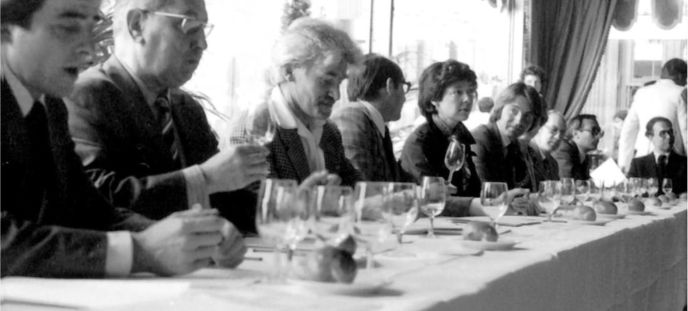
The tasting that revolutionized the wine world.
On 24 May
1976 the crème de la crème of the French wine establishment sat in
judgment for a blind tasting that pitted some of the finest wines in France
against unknown California bottles.
The only journalist
in attendance, George
M. Taber of Time magazine, later wrote in his article that "the
unthinkable happened," and in an allusion to Greek mythology called the
event "The Judgment of Paris," and thus it would forever be known.
The American wines
were brought across with a group of 30 Californian winemakers:
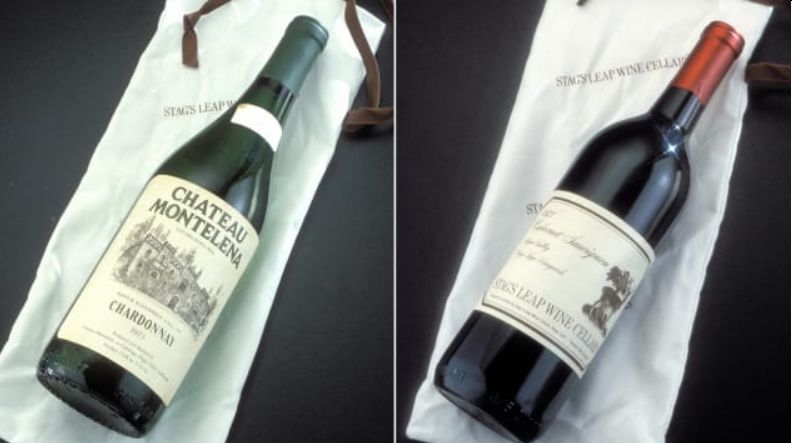
At one point, Taber
says, a judge, Raymond Oliver, chef and owner of Le Grand Véfour,
one of Paris' great restaurants, sampled a white. "And then he smelled it,
then he tasted it and he held it up again, [and] he said, "Ah, back to
France!" Taber recalls.
Except it was a Napa
Valley chardonnay. The judge didn't know that. "But I knew," Taber
says. And once he realized what was happening, Taber says, "I thought,
hey, maybe I got a story here." Decades later, he penned The Judgment
of Paris, an account of that day and its aftermath.
When the scores were
tallied, the top honors went not to France's best vintners but to a California
white and red, the 1973 chardonnay from Chateau Montelena and the 1973 cabernet
sauvignon from Stag's Leap Wine Cellars.
Patricia Gallagher
(from left), who first proposed the tasting; wine merchant Steven Spurrier; and
influential French wine editor Odette Kahn. After the results were
announced, Kahn is said to have demanded her scorecard back. "She wanted
to make sure that the world didn't know what her scores were," says George
Taber.
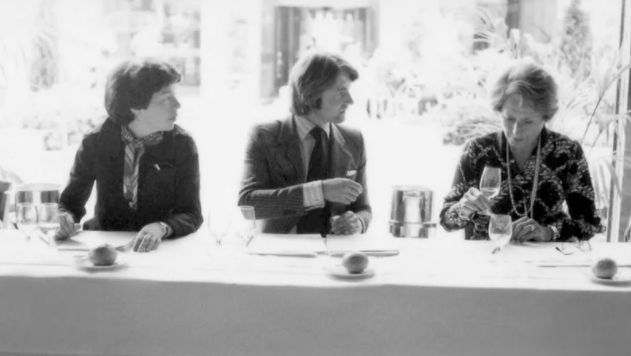
As the founder of
this event, Steven Spurrier who only sold French wine believed that California
wines would not win, and would in turn boost his business. Critics of
this event suggested that wine tastings lacked scientific validity due to the
subjectivity of taste in human beings.
Spurrier backed this
up by saying, “The results of a blind tasting cannot be predicted and will not
even be reproduced the next day by the same panel tasting the same
wines.” It was even reported that a side-by-side chart of the best to
worst rankings of the 18 wines by a group of experienced tasters at this event
showed about as much consistency as a table of random numbers.
Jim Barrett described
the victory as: "Not
bad for kids from the sticks."
The tasting changed
history for wines of the New World, coming from outside of traditional wine
regions such as France, Italy and Spain.
In France, the
tasting raised more than a few eyebrows and some questions about the process
and the wine selection, with most of the Bordeaux producers claiming that their
wines were too young to be at their best.
Its significance,
however, stands unblemished.
Bottles of Chateau
Montelena and Stag's Leap Wine Cellars like those that won the contest are now
part of the collection at the Smithsonian's National Museum of American
History. And a 2008 film, "Bottle Shock," tells a heavily
fictionalized version of the story, with Alan Rickman as Steve Spurrier.

More recently Bo Barrett, who is married to Heidi Peterson
Barrett, maker of the
inaugural vintage of cult California wine Screaming Eagle, has taken on the
role of CEO.
To prove that price
alone does not correlate to the taste of wine, a wine drinker only has to
sample his or her favorite wine served at two different temperatures.
Just a few degrees difference can make the wine from the same bottle of wine
taste vastly different. If you like your favorite wine served at slightly
below room temperature, but it is brought to your table ten degrees cooler, you
may think that you were given a different wine all together.
So how many other
factors or elements are out there, defining wine
experiences for
wine lovers? It turns out that there may be quite a few, such as label,
price, color, food pairing, and the most influential element, personal
experience. Several scientists, psychologists, and winemakers have been
proving the power of these influences for decades.
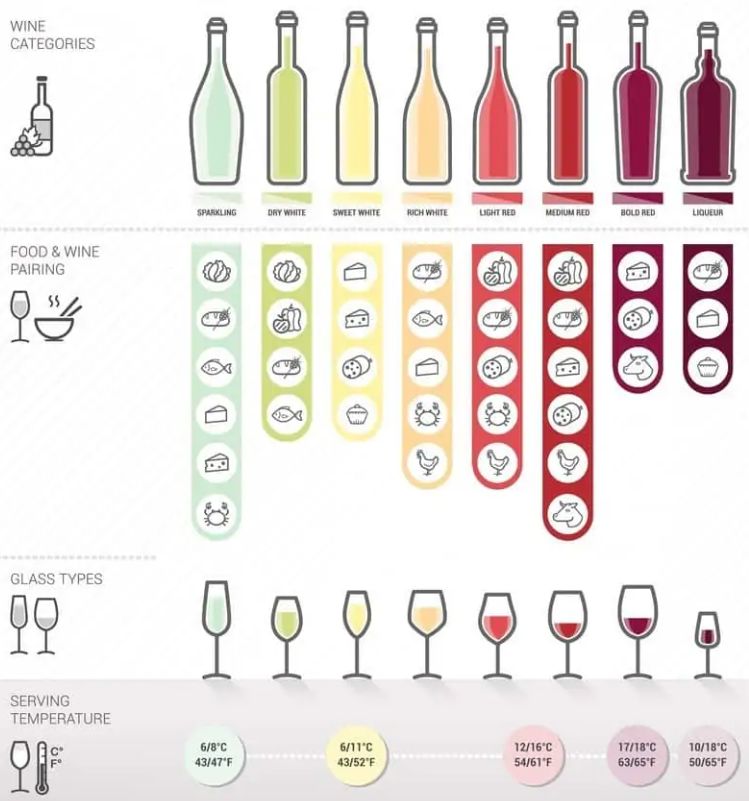
Compounding this
problem is our obsession with assigning numbers to things. In this day
and age, we like ratings and scores.
Think of when you
purchase an item on Amazon, one of the first things you do is look at the
number of stars your item receives. When you are on vacation, and you
want to find the best restaurant in the area, you look at Yelp or TripAdvisor
to see which restaurant received the highest rating.
This same concept of
rating the purchase of an item on Amazon, or the selection of a restaurant
based on the number of stars it receives on TripAdvisor, has spilled over into
the world of wine. There are different rating systems, but they all achieve
the same result, they make wine quality more identifiable and winnows down all
of the overwhelming noise.
For updates click homepage here